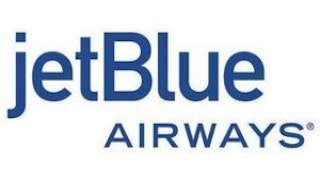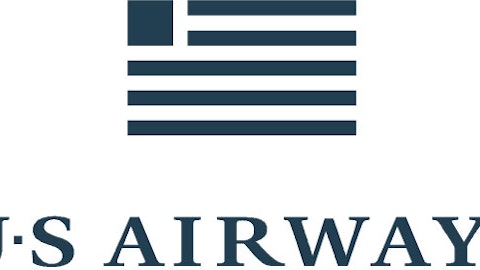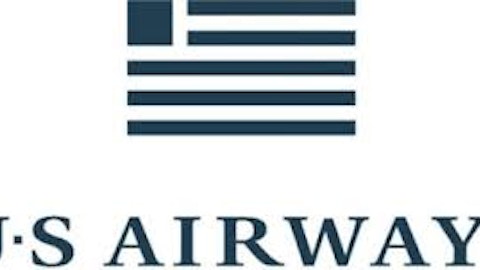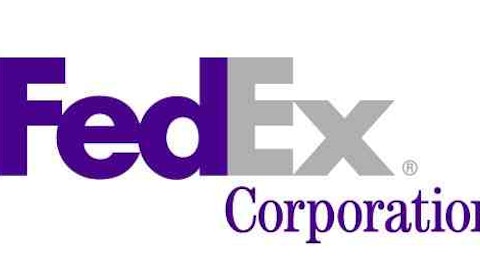American airline firms have had several difficult years, and as a sector there is a lot of uncertainty about the future. This article will briefly analyze the general sector landscape and compare a few of the main carriers. I’m bullish about JetBlue Airways Corporation (NASDAQ:JBLU) and possibly US Airways Group, Inc. (NYSE:LCC), although the merger with AMR adds additional uncertainty. I don’t view Delta Air Lines, Inc. (NYSE:DAL) and United Continental Holdings Inc (NYSE:UAL) as great investments.

The profit margin declined by 2.6% on a 7.5% surge in expenses related to accelerated maintenance on the Embraer E190 jet engines. Management is working to contain the problem by entering into a long-term agreement with GE for maintenance, but these costs will remain substantial as JetBlue Airways Corporation (NASDAQ:JBLU) completes repairs and overhauls.
Fortunately, ancillary revenue per customer increased 4%, driven by increased usage of the TrueBlue and Even More programs. TrueBlue is JetBlue Airways Corporation (NASDAQ:JBLU)’s frequent-flyer rewards program; with Even More, passengers can pay a little extra for some extra legroom and the ability to get to the overhead bins first. Overall, management anticipates ancillary revenue to achieve a 15% gain year-over-year for 2013.
Laps competitors
Even with the earlier-mentioned margin decline, JetBlue Airways Corporation (NASDAQ:JBLU) laps the competition with an operating margin of 6.8% for the trailing-12 months–better than Delta Air Lines, Inc. (NYSE:DAL) at 5.5% and United Continental Holdings Inc (NYSE:UAL) at -1.5%. In all fairness to Delta, management is very bullish on the company’s third quarter and is predicting an operating margin of 11% to 13%, so there may be some short-term opportunities there. Long-term, however, United and Delta are both just too big–and too in debt–to respond as nimbly as JetBlue to potential opportunities.
Delta is sitting on over $10 billion in debt, while United has over $12 billion in debt. JetBlue, by contrast, has a little less than $3 billion: still a lot, but it accounts for a lower debt/equity ratio (about 1.2) than the others (United’s is about 9.0; Delta has negative shareholder equity, so the ratio cannot be calculated.) The ability to take on additional leverage gives JetBlue better growth prospects.
Management is emphasizing code-sharing agreements with other airlines in its business strategy. Recently, JetBlue signed a bilateral code-share with South African Airways, which now leaves the carrier with 24 code-share agreements. For a smaller carrier like JetBlue, code-shares (which result in seats marketed by one airline while the actual plane is operated by a different carrier) enable greater market exposure and more clients.
These growth strategies will pay dividends over the long term. JetBlue’s position as best-in-class for customer service (its ninth year winning the award) also hasn’t hurt. Along with the aforementioned customer-rewards programs, the high satisfaction rating is helping the airline maintain and grow its customer base.
Management made the right choice in getting out in front of the E190 problem, and the long-term growth plan appears to be roughly on track. Earnings will have some trouble over the near term, but long term this is a great growth opportunity. This airline has the fundamentals down pat: cheap fares, great customer service, and a customizable experience.
Another intriguing play
US Airways Group, Inc. (NYSE:LCC) doesn’t have JetBlue’s growth prospects, but it might present an excellent opportunity to a value-oriented investor. The P/E ratio for the trailing-12 months is a stunning 6.5, with a forward P/E of just 4.5. The airline is entering a merger with bankrupt AMR, parent of American Airlines, which has created a great deal of uncertainty around the company’s future. AMR posted a steady string of losses over the past five years and is (as previously noted) bankrupt.
US Airways Group, Inc. (NYSE:LCC)’ earnings haven’t helped either, with the 2010 EPS clocking in at $2.61, 2011 at $0.44, and 2012 at $3.28. Air travel is a volatile business, and this company has more built-in uncertainty than most. If you’re willing to take a lot of risk, this could be an excellent opportunity to get into the stock. Keep an eye on PRASM (which declined by 0.9% last quarter), continued efforts to contain fuel costs, and the merger.
Foolish conclusion
Buy JetBlue–management is making all the right decisions to assure long-term profitability and great returns for shareholders. US Airways Group, Inc. (NYSE:LCC) is an excellent value play assuming the American Airlines merger and integration are reasonably successful. Delta and United Continental are not in a position that makes me confident in their ability to adapt in the future.
The article Two Airliners for the Long Haul originally appeared on Fool.com and is written by Michael Douglass.
Michael Douglass has no position in any stocks mentioned. The Motley Fool has no position in any of the stocks mentioned. Michael is a member of The Motley Fool Blog Network — entries represent the personal opinion of the blogger and are not formally edited.
Copyright © 1995 – 2013 The Motley Fool, LLC. All rights reserved. The Motley Fool has a disclosure policy.




